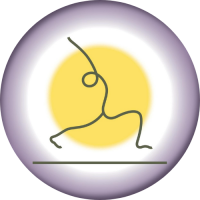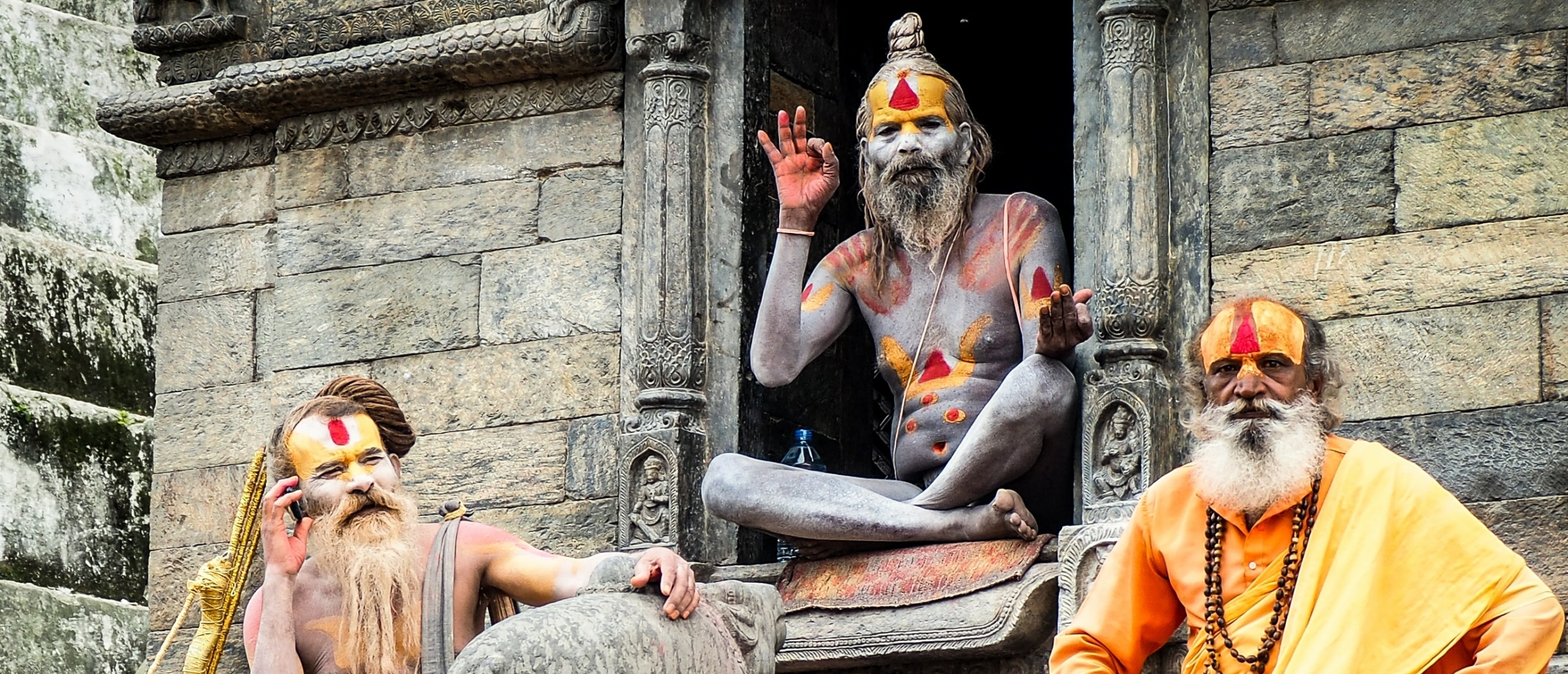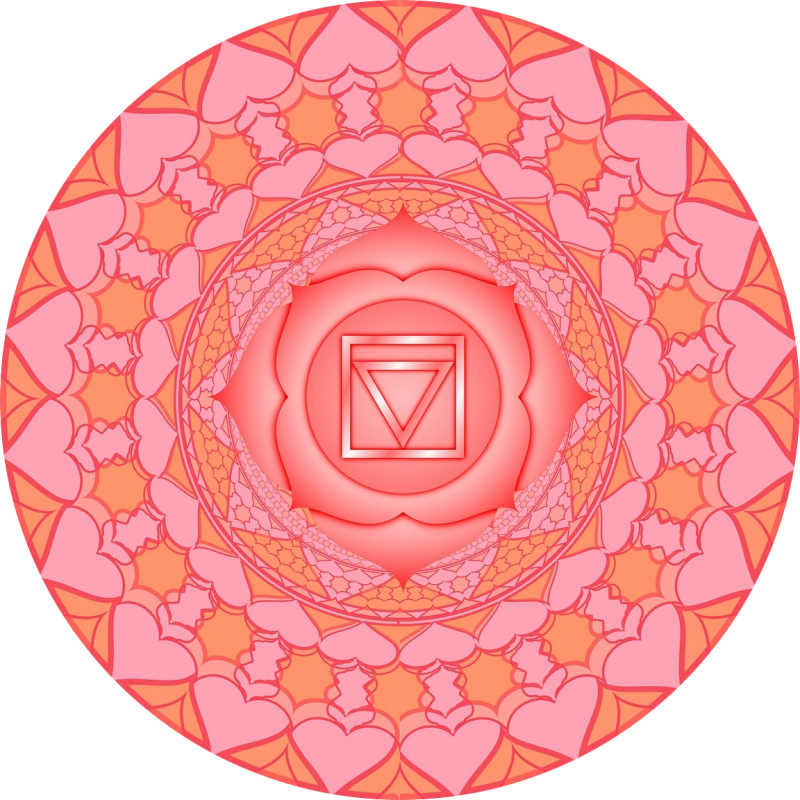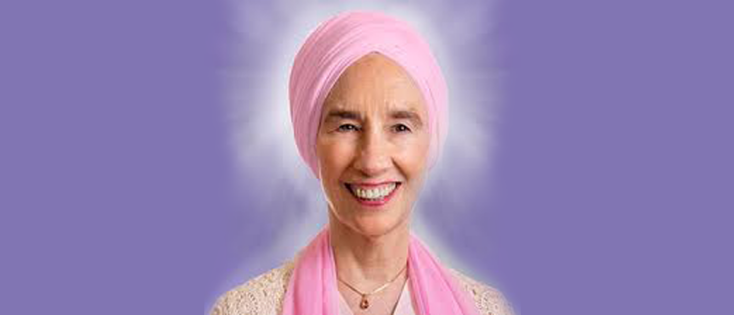Writer: Usha Uppal
Yoga has become part of our world; nearly everyone has tried it or knows someone who has. We have access to various yoga styles, and we can do puppy yoga, attend yoga festivals, drink yogi tea, and more.
But wait a minute, what are the origins of yoga, and how and where did it originate? We can find the answers if we allow ourselves to dive into the past of ancient India. We will find that this road will lead straight back to kundalini yoga.
Read on to learn more about the benefits of kundalini yoga, which is rooted in the sacred hidden Indian yogic tradition.
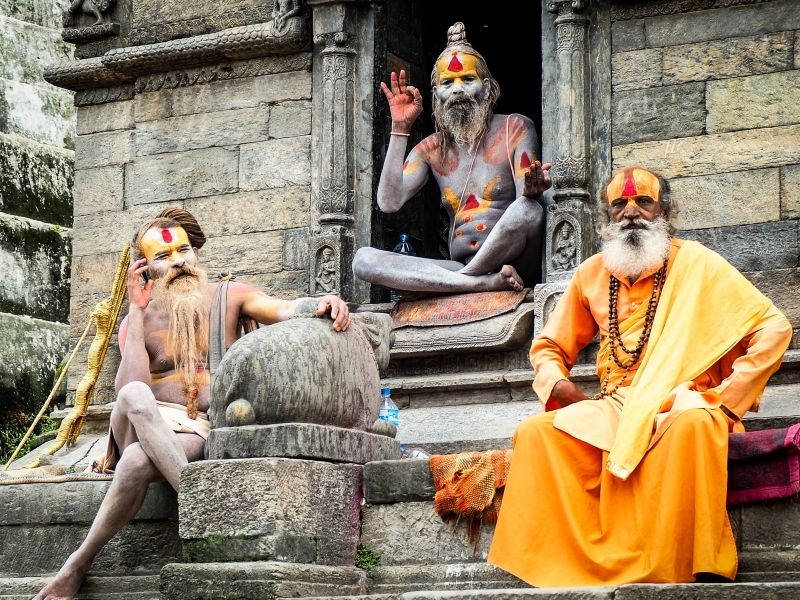 Yogis in ancient India
Yogis in ancient India
The spiritual side of life played a significant part in ancient Indian society, seated in the Indus valley. It was part of everyday life. The ancient Indians knew that matter is a manifestation of spirit (mind over matter), and they studied the spiritual extensively.
Yogis devoted their lives to commit to the spiritual and benefiting from this knowledge. In ancient Indian society, rulers, merchants, scholars, and laypeople valued this commitment to the spiritual. Yogis were often admired, revered, and sometimes even feared. Special powers were assigned to them, which they had obtained by the practice of tantric yoga.
Tantra
The yogis knew how to activate their kundalini. They knew specific techniques and habits would enhance the awakening, such as taking on tantric postures, abstinence, isolation, breathing techniques, meditation, hand gestures, and sounds.
The kundalini life force is often depicted as a coiled snake at the base of our spine. When the kundalini is activated, the snake awakens, uncoils, and rises along the spinal cord. By letting their kundalini rise, the yogis could become enlightened and forever reside in the nirvana, which is eternal life and bliss. Tantric practice enabled the yogis to let their kundalini rise.
Yogis in ancient India worked towards activating the kundalini for decades, and they would often retreat to caves in the Himalayas mountains. They would not disperse their knowledge to everyone; only initiates who had achieved a certain level of awareness by devoting their lives to the ancient practice of yoga were given access.
The yogis kept their tantric practice hidden for centuries. Extraordinary powers were attributed to practitioners of tantra. Breathing techniques, postures, hand gestures, and sounds are all part of tantra practice.
In tantric philosophy, as practiced by the ancient yogis, all life is seen as an expression of infinite, divine consciousness. Humans can access this infinite consciousness by letting the kundalini rise.
In the sixties of the previous century, Guru Bhajan, founder of kundalini yoga, introduced these tantric techniques to the Western world. Now everyone had access to the tantric practices of ancient India, and many people experienced the profound effects of kundalini yoga.
Kundalini
The kundalini (the snake at the base of our spine) can rise and make its journey along the seven chakras of the physical body. The chakras are placed vertically along the spinal cord: at the base of our spine lies the root chakra, above that the navel chakra, the solar plexus, all the way up to the crown chakra. The yogis knew how to keep their chakras flowing and spinning and understood the importance of it. By keeping their chakras clean, the kundalini life force could rise through them without hindrance.
When the kundalini rises, one can experience an immersion of light: one becomes enlightened. The consciousness of the yogi has now expanded and transcended duality. The yogi is living a transcended state of consciousness. It may take tens of years, or, according to Hindu reincarnation philosophy, it may take many lives for a human to achieve this state of consciousness.
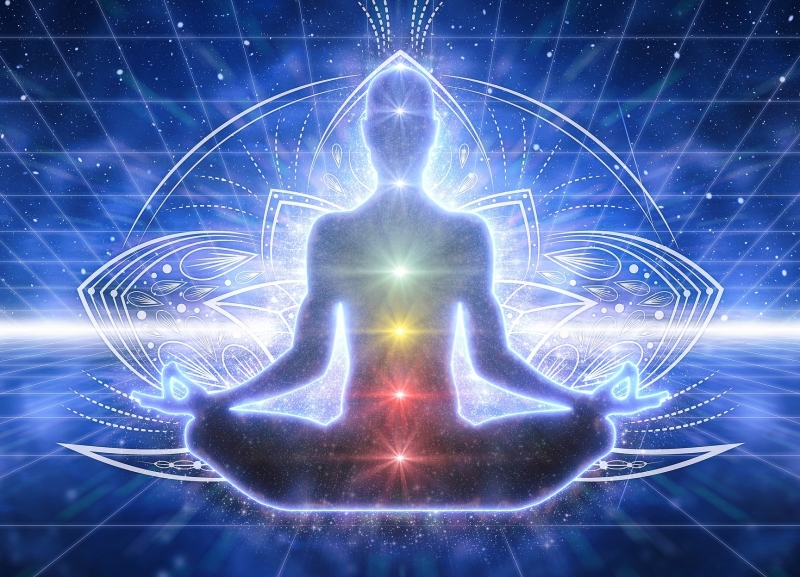
The chakras
Chakra means 'wheel' in Sanskrit, the holy language of ancient India. There are seven chakras within the body, which correspond to the glands and organs in our body. The chakras are part of our subtle energetic body and function optimally if they can flow freely.
Practicing kundalini yoga will cleanse the chakras and lift blockages within the chakras. The kundalini energy will be able to rise more quickly.
As mentioned before, each chakra is not only connected to a specific gland and organ but also performs specific functions. All chakras have specific sounds, an element that corresponds with them, a color, and a Sanskrit name. There are feminine and masculine chakras (extraverted/yang and introverted/yin). For example, the third eye is male, and the heart chakra is feminine.
Below is a comprised overview of the seven chakras.
Root chakra, ‘Muladhara'
Location: at the tailbone.
Colour: red.
Muladhara is our foundation, connection with mother earth, and the physical side of our existence. In this chakra, we also find our stability, safety, house and money, the amount of success we may have in life, and the feeling of belonging.

Navel/sacral chakra, ‘Svadisthana’
Location: a couple of centimeters below the navel.
Colour: orange.
In the navel chakra, we can experience our sexuality, emotions, and how we express our feelings. Here our creativity is seated, and in our navel chakra, we can sense the sentiments of others.
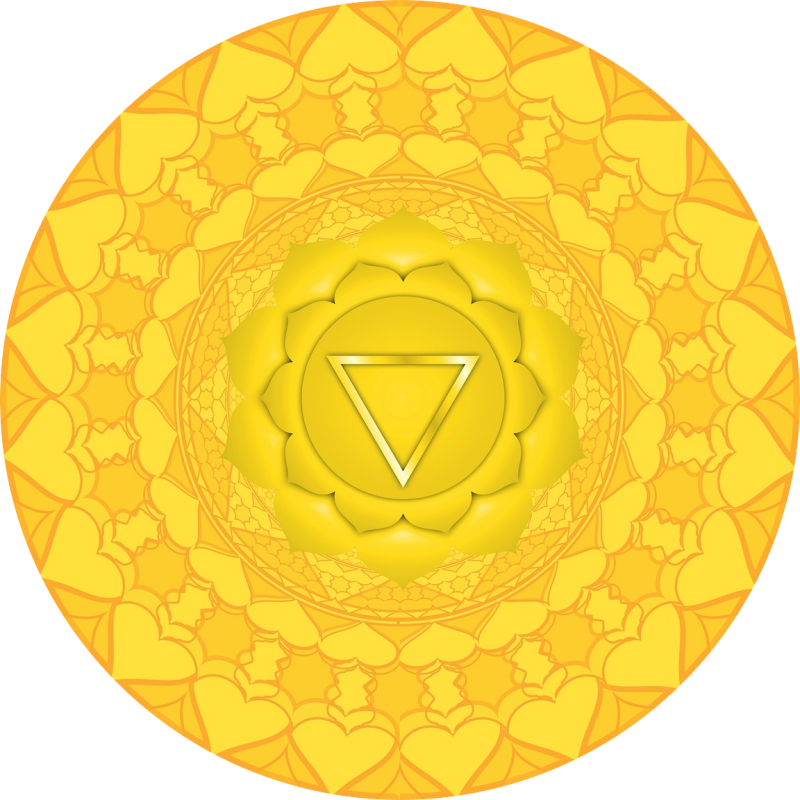
Solar plexus, ‘Manipura’
Location: at the stomach.
Colour: Yellow
The solar plexus is where our willpower lies and our ability to transform our willpower into action. The solar plexus helps us to direct our energies and to send them wherever they are needed. This chakra is also about control and power. It enables us to take control of our lives and address feelings of powerlessness.
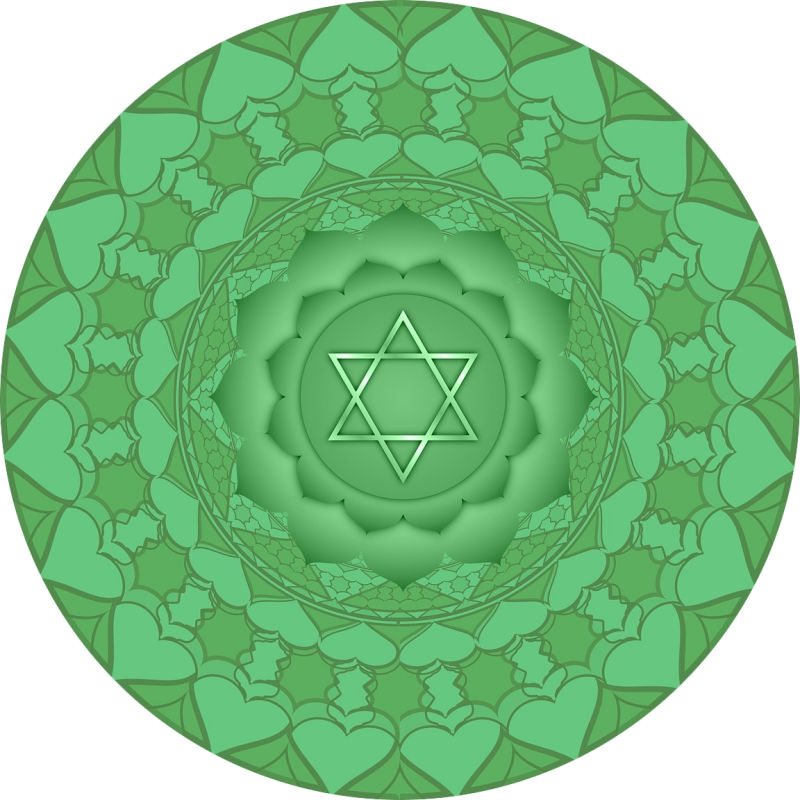
Heart chakra, ‘ Anahata'
Location: at the chest, close to the heart.
Colour: Green.
The heart chakra is positioned in the center of the seven chakras and connects the lower with the higher chakras. We feel love and empathy for all living beings in our heart chakra. The heart chakra is where we find our inner child and where we find a balance in giving and receiving.
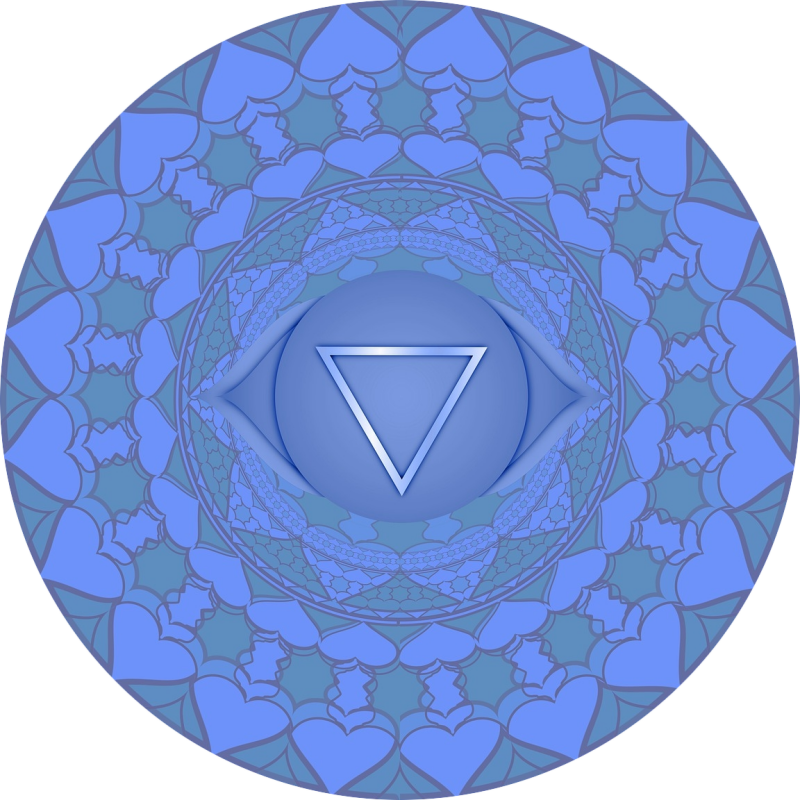
Throat chakra, ‘Vishuddha’
Location: at the larynx in our throat.
Colour: light blue.
The throat chakra enables us to express ourselves, and it is here that we can communicate with others. In the throat chakra, we long for others to hear us, and here we can find the ability to listen to others. Musicality is seated in this chakra, as is the judgment over others and ourselves. Finally, this chakra enables us to follow our inner voice if we take the time to listen.
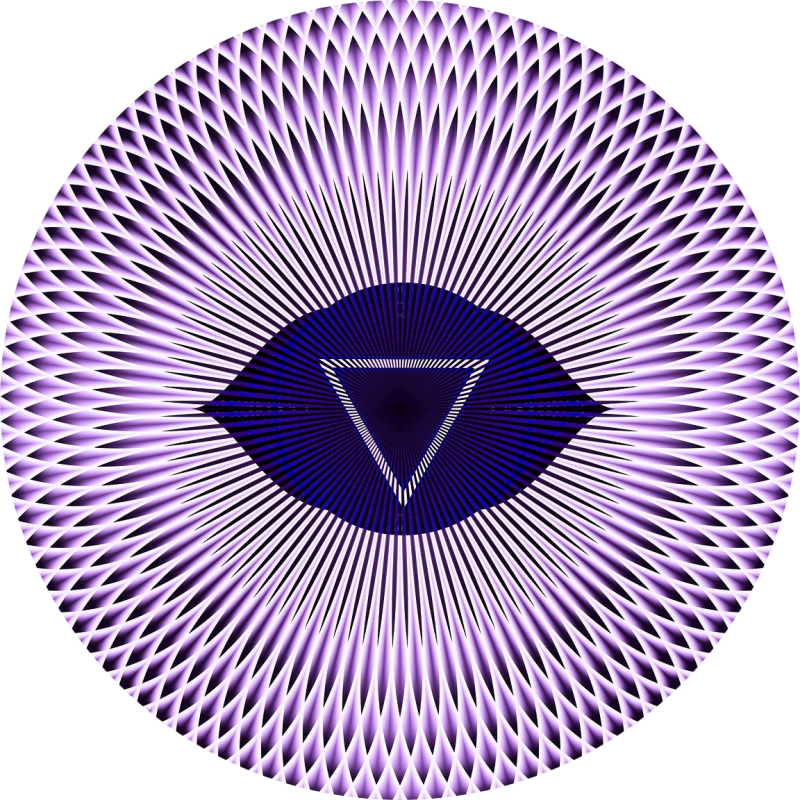
The third eye, 'Ajna'
Location: above and between the eyebrows.
Colour: indigo/midnight blue.
This chakra is home to analytical skills, the ability to have an overview of situations, prioritize, and structure. Here we can find clairvoyance, our imagination, and our image of ourselves and the world around us.
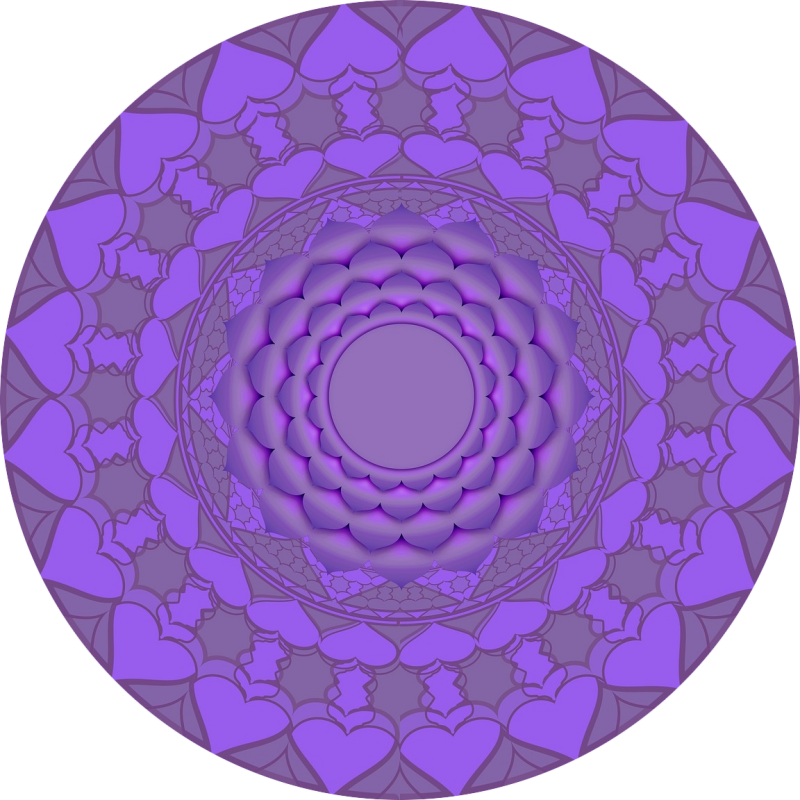
Crown chakra, ‘Sahasrara’
Location: at our physical crown.
Colour: purple.
The crown chakra enables us to move past duality and experience unity. In the crown chakra, we know who we truly are and that each human being is unique. The crown chakra lets us see the truth and our purpose here on earth. Here we feel connected with ourselves, others, and the universe.
Kundalini yoga: hidden knowledge accessible to everyone
As we have seen, there was tantric practice back in the days of the yogis in ancient India. Later the philosophy of yoga, comprised of several aspects of life, arose. Yoga philosophy was written down in the Upanishads, the ancient Indian scriptures.
We have also discussed the secretive nature of the tantric practice: it was secret knowledge, only passed down to initiates deemed worthy of it. Gurus (teachers) passed on this knowledge to their pupils.
Guru Bhajan, the founder of kundalini yoga, has finally brought the knowledge of ancient tantric practice to the West. Now everyone has access to this knowledge. Ever since Guru Bhajan introduced kundalini yoga in the sixties of the previous century, many people worldwide have benefited from it.
Anyone can practice it and enjoy the many benefits of kundalini yoga. Beginners, advanced yoga practitioners, young and old: it is for everyone.
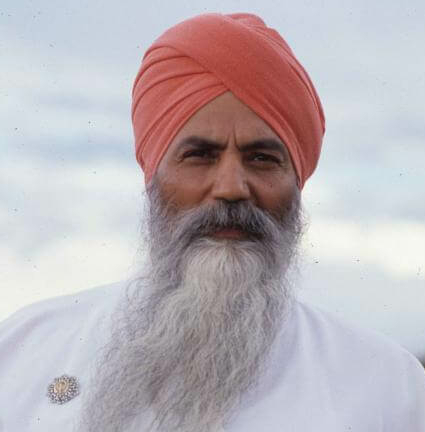
Healing and transformation
The good news is that we no longer have to live in a cave for thirty years! Anyone can follow these highly effective techniques, release blockages within the chakras, and let the kundalini awaken.
The journey through the chakras is a healing journey: traumas are addressed and healed, toxins leave the body, and oxygen in the body increases.
By practicing kundalini yoga, one starts to feel more connected with others, feel more empathy, and feel peaceful inside.
The structure of a kundalini yoga class
Guru Bhajan merged ancient tantric practices with yoga and structured them. Each kundalini class is structured the same way.
The 'kriyas' are central to each kundalini practice. A kriya consists of a specific breathing technique, sound, posture, and hand gesture. There are many kriyas, each with its specific meaning and effect. There are kriyas to particular chakras, elements, moods, and healing purposes.
The kundalini teacher plans which kriyas will be practiced during class. Sometimes a class will be devoted to a theme, and the kriyas will be centered around that theme.
The structure of a kundalini class looks like this:
1 Opening: Each class opens with a 'mantra' (singing or expressing Sanskrit words or phrases, also called chanting).
2 'Pranayama': breathing exercises.
3 'Kriyas': postures accompanied by specific breathing techniques, 'mudras' (gestures of the hands), chants, and meditation.
4 Relaxation: each kriya is followed by a moment to relax and experience the effect of the kriya.
5 Meditation: by meditating, the practitioner expands their consciousness. The other parts of the kundalini yoga class have prepared the practitioner for meditation.
6 Mantra: the class ends with a mantra.
A kundalini yoga class has profound effects on the body and the mind. The structure of a kundalini yoga class is essential in enabling the practitioner to integrate the results thoroughly.
The importance of meditation within kundalini yoga practice
Meditation is an essential aspect of kundalini yoga. After each kriya, there is time for the kundalini yoga practitioner to experience the effects of the kriya through a short meditation.
The pranayama exercises and the mantras enable the yogi to relax and refresh the mind.
Meditation and kundalini yoga are intertwined; meditation is a quality of kundalini yoga. In this respect, kundalini yoga differs from other yoga styles. For example, kundalini yoga differs from hatha yoga since hatha yoga is more focused on the physical side of yoga.
The importance of the guru
In India, the guru and pupil relationship is revered highly. The pupil respects the guru and touches his feet as a sign of showing his respect. In India, the guru is called 'Guruji,' a token of respect. Only after decades can a pupil become a guru himself, and the relationship between guru and pupil is permanent and close. This tradition is ancient and also applies to the arts.
The kundalini yoga guru has knowledge and experience and will see and understand the psychological processes of the pupil. There is trust between the pupil and the teacher, which is needed for the pupil to keep on growing.
Precisely because kundalini yoga is so effective, the role of the guru becomes even more critical. The pupil will go through changes by practicing kundalini yoga, and the guru can be a safe haven during those times. In this respect, the guru is not only a kundalini teacher but also a coach and therapist. The guru has walked the path before and knows how it feels, and he can guide others on their path.
In kundalini yoga, it is essential that the pupil feels safe: only in this way can the pupil surrender and break through resistance. The guru must have profound knowledge of kundalini yoga, anatomy, and the physical, emotional, and spiritual processes the pupil experiences.
We hope that you have enjoyed this article. Stay tuned for more articles on kundalini yoga!
